Guodong Zhou
A Survey of Long-Document Retrieval in the PLM and LLM Era
Sep 09, 2025



Abstract:The proliferation of long-form documents presents a fundamental challenge to information retrieval (IR), as their length, dispersed evidence, and complex structures demand specialized methods beyond standard passage-level techniques. This survey provides the first comprehensive treatment of long-document retrieval (LDR), consolidating methods, challenges, and applications across three major eras. We systematize the evolution from classical lexical and early neural models to modern pre-trained (PLM) and large language models (LLMs), covering key paradigms like passage aggregation, hierarchical encoding, efficient attention, and the latest LLM-driven re-ranking and retrieval techniques. Beyond the models, we review domain-specific applications, specialized evaluation resources, and outline critical open challenges such as efficiency trade-offs, multimodal alignment, and faithfulness. This survey aims to provide both a consolidated reference and a forward-looking agenda for advancing long-document retrieval in the era of foundation models.
Query Expansion in the Age of Pre-trained and Large Language Models: A Comprehensive Survey
Sep 09, 2025Abstract:Modern information retrieval (IR) must bridge short, ambiguous queries and ever more diverse, rapidly evolving corpora. Query Expansion (QE) remains a key mechanism for mitigating vocabulary mismatch, but the design space has shifted markedly with pre-trained language models (PLMs) and large language models (LLMs). This survey synthesizes the field from three angles: (i) a four-dimensional framework of query expansion - from the point of injection (explicit vs. implicit QE), through grounding and interaction (knowledge bases, model-internal capabilities, multi-turn retrieval) and learning alignment, to knowledge graph-based argumentation; (ii) a model-centric taxonomy spanning encoder-only, encoder-decoder, decoder-only, instruction-tuned, and domain/multilingual variants, highlighting their characteristic affordances for QE (contextual disambiguation, controllable generation, zero-/few-shot reasoning); and (iii) practice-oriented guidance on where and how neural QE helps in first-stage retrieval, multi-query fusion, re-ranking, and retrieval-augmented generation (RAG). We compare traditional query expansion with PLM/LLM-based methods across seven key aspects, and we map applications across web search, biomedicine, e-commerce, open-domain QA/RAG, conversational and code search, and cross-lingual settings. The review distills design grounding and interaction, alignment/distillation (SFT/PEFT/DPO), and KG constraints - as robust remedies to topic drift and hallucination. We conclude with an agenda on quality control, cost-aware invocation, domain/temporal adaptation, evaluation beyond end-task metrics, and fairness/privacy. Collectively, these insights provide a principled blueprint for selecting and combining QE techniques under real-world constraints.
Sherlock: Towards Multi-scene Video Abnormal Event Extraction and Localization via a Global-local Spatial-sensitive LLM
Feb 26, 2025Abstract:Prior studies on Video Anomaly Detection (VAD) mainly focus on detecting whether each video frame is abnormal or not in the video, which largely ignore the structured video semantic information (i.e., what, when, and where does the abnormal event happen). With this in mind, we propose a new chat-paradigm \textbf{M}ulti-scene Video Abnormal Event Extraction and Localization (M-VAE) task, aiming to extract the abnormal event quadruples (i.e., subject, event type, object, scene) and localize such event. Further, this paper believes that this new task faces two key challenges, i.e., global-local spatial modeling and global-local spatial balancing. To this end, this paper proposes a Global-local Spatial-sensitive Large Language Model (LLM) named Sherlock, i.e., acting like Sherlock Holmes to track down the criminal events, for this M-VAE task. Specifically, this model designs a Global-local Spatial-enhanced MoE (GSM) module and a Spatial Imbalance Regulator (SIR) to address the two challenges respectively. Extensive experiments on our M-VAE instruction dataset show the significant advantages of Sherlock over several advanced Video-LLMs. This justifies the importance of global-local spatial information for the M-VAE task and the effectiveness of Sherlock in capturing such information.
Enhanced Retrieval of Long Documents: Leveraging Fine-Grained Block Representations with Large Language Models
Jan 28, 2025


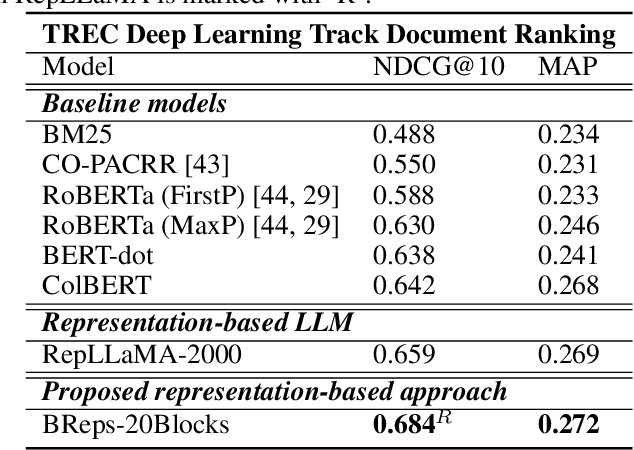
Abstract:In recent years, large language models (LLMs) have demonstrated exceptional power in various domains, including information retrieval. Most of the previous practices involve leveraging these models to create a single embedding for each query, each passage, or each document individually, a strategy exemplified and used by the Retrieval-Augmented Generation (RAG) framework. While this method has proven effective, we argue that it falls short in fully capturing the nuanced intricacies of document-level texts due to its reliance on a relatively coarse-grained representation. To address this limitation, we introduce a novel, fine-grained approach aimed at enhancing the accuracy of relevance scoring for long documents. Our methodology firstly segments a long document into blocks, each of which is embedded using an LLM, for matching with the query representation. When calculating the relevance score, we aggregate the query-block relevance scores through a weighted sum method, yielding a comprehensive score for the query with the entire document. Despite its apparent simplicity, our experimental findings reveal that this approach outperforms standard representation methods and achieves a significant reduction in embedding generation latency. Moreover, by carefully optimizing pairwise loss functions, superior performances have been achieved.
KeyB2: Selecting Key Blocks is Also Important for Long Document Ranking with Large Language Models
Nov 09, 2024


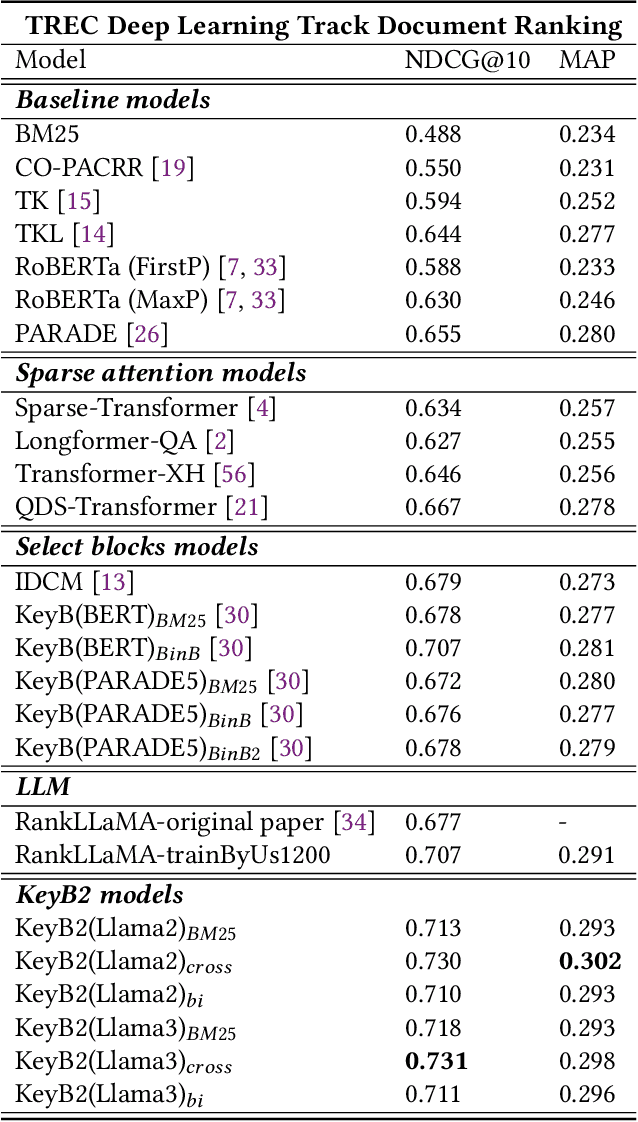
Abstract:The rapid development of large language models (LLMs) like Llama has significantly advanced information retrieval (IR) systems. However, using LLMs for long documents, as in RankLLaMA, remains challenging due to computational complexity, especially concerning input token length. Furthermore, the internal mechanisms of LLMs during ranking are still not fully understood. In this paper, we first explore the internal workings of LLMs during relevance judgement and identify that specific attention heads play a crucial role in aligning relevant tokens. This observation inspires us to revisit the block pre-ranking strategy used in KeyB, which remains state-of-the-art (SOTA) on the TREC 2019 DL document ranking dataset. Building on these insights, we develop KeyB2, an advanced long document IR approach that integrates block pre-ranking with the performance of LLMs. KeyB2 efficiently identifies and processes the most relevant blocks, reducing computational costs and improving ranking effectiveness. Additionally, we introduce a new bi-encoder block matching strategy for KeyB2. Comprehensive experiments on long-document datasets, including TREC 2019 DL, Robust04, and MLDR-zh, show that KeyB2 outperforms baselines like RankLLaMA and KeyB by reducing reranking time and GPU memory usage while enhancing retrieval performance, achieving new SOTA results on TREC 2019 DL with higher NDCG@10 and MAP scores.
Multi-layer Sequence Labeling-based Joint Biomedical Event Extraction
Aug 14, 2024


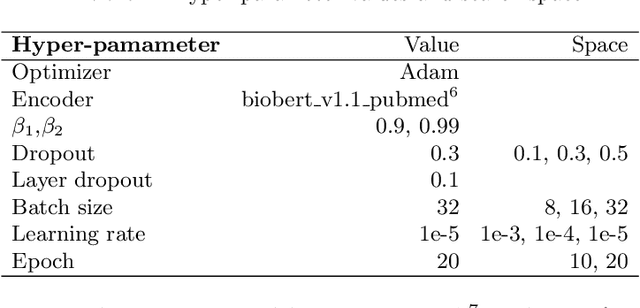
Abstract:In recent years, biomedical event extraction has been dominated by complicated pipeline and joint methods, which need to be simplified. In addition, existing work has not effectively utilized trigger word information explicitly. Hence, we propose MLSL, a method based on multi-layer sequence labeling for joint biomedical event extraction. MLSL does not introduce prior knowledge and complex structures. Moreover, it explicitly incorporates the information of candidate trigger words into the sequence labeling to learn the interaction relationships between trigger words and argument roles. Based on this, MLSL can learn well with just a simple workflow. Extensive experimentation demonstrates the superiority of MLSL in terms of extraction performance compared to other state-of-the-art methods.
OpenBA-V2: Reaching 77.3% High Compression Ratio with Fast Multi-Stage Pruning
May 09, 2024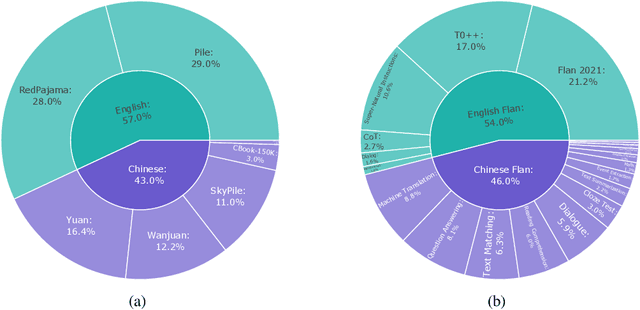

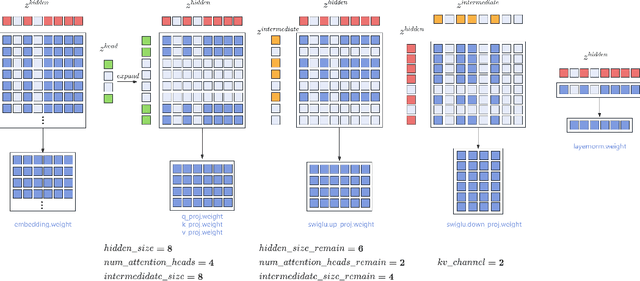
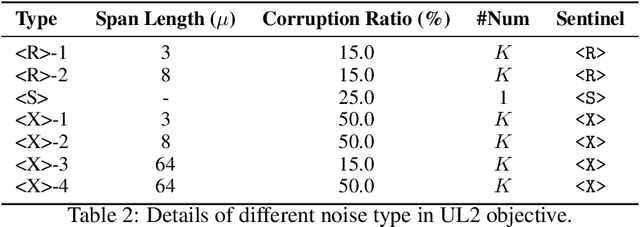
Abstract:Large Language Models (LLMs) have played an important role in many fields due to their powerful capabilities.However, their massive number of parameters leads to high deployment requirements and incurs significant inference costs, which impedes their practical applications. Training smaller models is an effective way to address this problem. Therefore, we introduce OpenBA-V2, a 3.4B model derived from multi-stage compression and continual pre-training from the original 15B OpenBA model. OpenBA-V2 utilizes more data, more flexible training objectives, and techniques such as layer pruning, neural pruning, and vocabulary pruning to achieve a compression rate of 77.3\% with minimal performance loss. OpenBA-V2 demonstrates competitive performance compared to other open-source models of similar size, achieving results close to or on par with the 15B OpenBA model in downstream tasks such as common sense reasoning and Named Entity Recognition (NER). OpenBA-V2 illustrates that LLMs can be compressed into smaller ones with minimal performance loss by employing advanced training objectives and data strategies, which may help deploy LLMs in resource-limited scenarios.
Pipelined Biomedical Event Extraction Rivaling Joint Learning
Mar 19, 2024


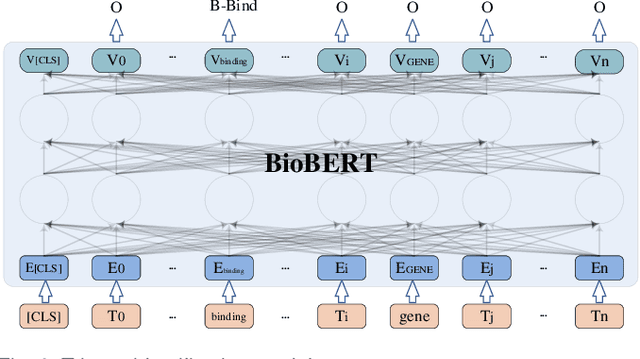
Abstract:Biomedical event extraction is an information extraction task to obtain events from biomedical text, whose targets include the type, the trigger, and the respective arguments involved in an event. Traditional biomedical event extraction usually adopts a pipelined approach, which contains trigger identification, argument role recognition, and finally event construction either using specific rules or by machine learning. In this paper, we propose an n-ary relation extraction method based on the BERT pre-training model to construct Binding events, in order to capture the semantic information about an event's context and its participants. The experimental results show that our method achieves promising results on the GE11 and GE13 corpora of the BioNLP shared task with F1 scores of 63.14% and 59.40%, respectively. It demonstrates that by significantly improving theperformance of Binding events, the overall performance of the pipelined event extraction approach or even exceeds those of current joint learning methods.
ChatASU: Evoking LLM's Reflexion to Truly Understand Aspect Sentiment in Dialogues
Mar 12, 2024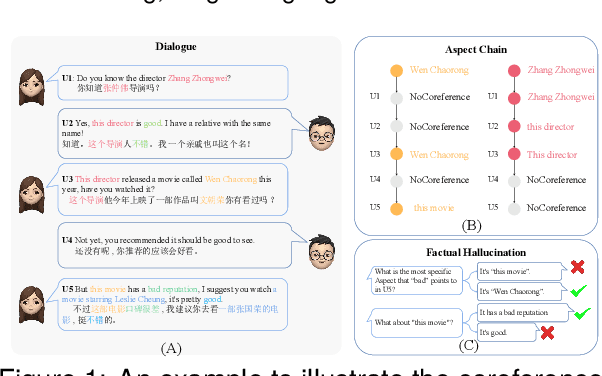

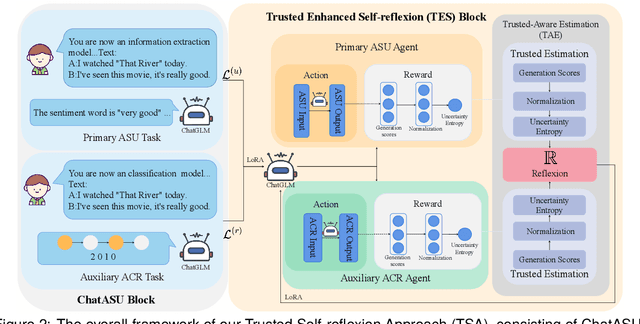

Abstract:Aspect Sentiment Understanding (ASU) in interactive scenarios (e.g., Question-Answering and Dialogue) has attracted ever-more interest in recent years and achieved important progresses. However, existing studies on interactive ASU largely ignore the coreference issue for opinion targets (i.e., aspects), while this phenomenon is ubiquitous in interactive scenarios especially dialogues, limiting the ASU performance. Recently, large language models (LLMs) shows the powerful ability to integrate various NLP tasks with the chat paradigm. In this way, this paper proposes a new Chat-based Aspect Sentiment Understanding (ChatASU) task, aiming to explore LLMs' ability in understanding aspect sentiments in dialogue scenarios. Particularly, this ChatASU task introduces a sub-task, i.e., Aspect Chain Reasoning (ACR) task, to address the aspect coreference issue. On this basis, we propose a Trusted Self-reflexion Approach (TSA) with ChatGLM as backbone to ChatASU. Specifically, this TSA treats the ACR task as an auxiliary task to boost the performance of the primary ASU task, and further integrates trusted learning into reflexion mechanisms to alleviate the LLMs-intrinsic factual hallucination problem in TSA. Furthermore, a high-quality ChatASU dataset is annotated to evaluate TSA, and extensive experiments show that our proposed TSA can significantly outperform several state-of-the-art baselines, justifying the effectiveness of TSA to ChatASU and the importance of considering the coreference and hallucination issues in ChatASU.
TopicDiff: A Topic-enriched Diffusion Approach for Multimodal Conversational Emotion Detection
Mar 11, 2024Abstract:Multimodal Conversational Emotion (MCE) detection, generally spanning across the acoustic, vision and language modalities, has attracted increasing interest in the multimedia community. Previous studies predominantly focus on learning contextual information in conversations with only a few considering the topic information in single language modality, while always neglecting the acoustic and vision topic information. On this basis, we propose a model-agnostic Topic-enriched Diffusion (TopicDiff) approach for capturing multimodal topic information in MCE tasks. Particularly, we integrate the diffusion model into neural topic model to alleviate the diversity deficiency problem of neural topic model in capturing topic information. Detailed evaluations demonstrate the significant improvements of TopicDiff over the state-of-the-art MCE baselines, justifying the importance of multimodal topic information to MCE and the effectiveness of TopicDiff in capturing such information. Furthermore, we observe an interesting finding that the topic information in acoustic and vision is more discriminative and robust compared to the language.
 Add to Chrome
Add to Chrome Add to Firefox
Add to Firefox Add to Edge
Add to Edge